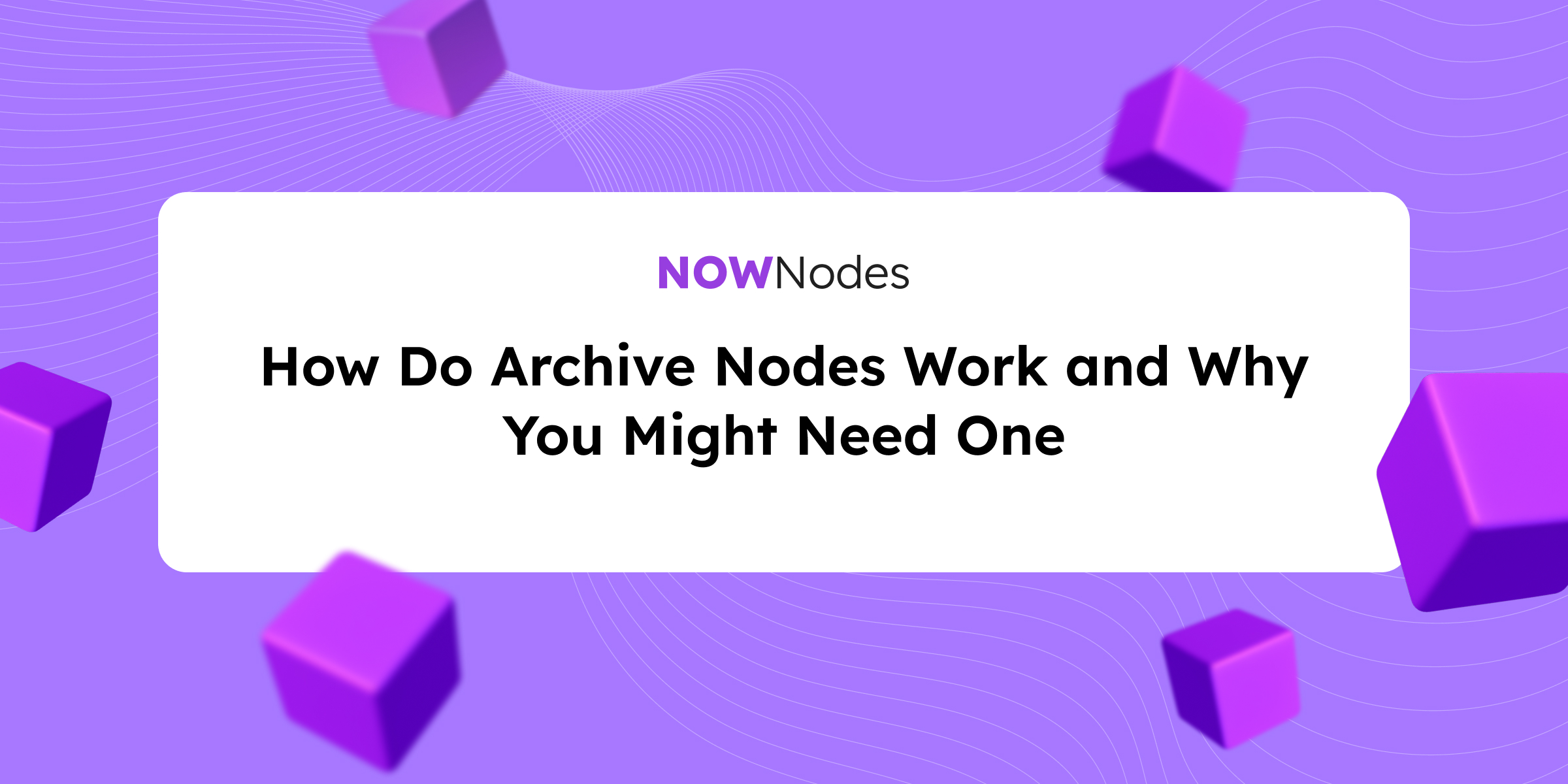Wanna check the blockchain historical data but do not know how? Here’s comes the archive node. If you’ve been building in Web3 or digging into blockchain data, you may have heard the term before. But what makes it different from a regular node, and why do developers and analysts rely on it so much? Let’s explore, step by step.
How do Archive nodes work?
Every blockchain is made up of blocks — bundles of transactions linked together over time. Most nodes on the network, called full nodes, store the latest state of the chain and just enough recent history to operate smoothly. That’s enough for sending tokens, deploying contracts, or using dApps.
An archive node, however, doesn’t just stop at “recent history.” It saves everything — from the very first block (the genesis block) to the present moment, along with every intermediate state in between. This means you can precisely recreate how the blockchain looked at any point in the past.
How Archive Nodes Operate
Think of it like this:
- A full node is like a news site showing only today’s articles and a few from the past week.
- An archive node is the complete library — every article, every update, all neatly indexed since day one.
From a technical perspective, archive nodes keep a dedicated database that maps each block height to its exact state. This extra precision comes with a cost: in some blockchains, the archive can take up dozens of terabytes of storage, along with powerful hardware to keep it synced in real time.
Ethereum Archive Node in Action
Ethereum is a perfect example of how archive nodes are used. A standard Ethereum full node can tell you the current balance of an address or the state of a smart contract right now. But what if you need the balance from January 1, 2018, or want to know exactly how a DeFi protocol’s contract storage looked at block #5,000,000?
A full node can’t help you there — but an Ethereum archive node can. It has a complete record of every block and every state change since Ethereum launched in 2015. This opens up powerful possibilities:
- Auditing smart contracts over their full lifespan.
- Running detailed DeFi analytics and historical transaction research.
- Backtesting trading strategies using precise blockchain states from the past.
For developers, analysts, and compliance teams, having this level of access can save countless hours of data reconstruction and make certain insights possible for the first time.
Why They’re Indispensable — and Hard to Run
An archive node is essentially the blockchain’s photographic memory. That makes it essential for serious analytics, regulatory audits, or any application where historical accuracy is critical.
The trade-off? They’re massive and resource-heavy. You’ll need high-speed, high-capacity storage, considerable processing power, and weeks to fully synchronize one from scratch. And once it’s running, it requires constant maintenance.
Getting Archive Node Access Without the Overhead
Because of these challenges, most teams choose to connect to an archive node through an infrastructure provider instead of hosting one themselves. This way, they get instant, reliable access to historical data without investing in heavy hardware.
Archive Nodes with NOWNodes
At NOWNodes, we make it easy to tap into blockchain archive nodes — including Ethereum — via our dedicated service.
We can launch archive nodes by your request. While not every network is instantly available, we’ll do our best to deliver the right solution for your project.
Reach out to us to discuss your archive node needs and see what’s possible.



